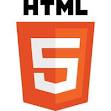Celebrating Innovation: KHTML, The Engine Behind Giants, KHTML: The Little Browser Engine That Powered the Web’s Giants, In the world of web browsers, names like Chrome, Safari, and Firefox dominate the conversation. Their rendering engines—Blink and Gecko—are household names in the tech community. But there’s a quiet, unassuming hero in this story, an engine whose code forms the foundational DNA of much of the modern web: KHTML.
Long before it was cool, KHTML was there, powering a revolution from the shadows. This is the story of the little open-source project that could, and how it changed the internet forever.

What Exactly is KHTML?
KHTML was the HTML rendering engine developed by the KDE project for its Konqueror web browser. First released in 1998, it was a core component of the K Desktop Environment on Linux and other Unix-like operating systems.
For its time, KHTML was remarkably advanced. It was:
- Fast and Lightweight: Written in C++, it was designed for speed and efficiency, a stark contrast to some of the bulkier competitors of the era.
- Standards-Compliant: The KDE team was deeply committed to web standards, ensuring KHTML correctly rendered HTML, CSS, and the nascent Document Object Model (DOM).
- Open Source: Released under the GNU Lesser General Public License (LGPL), its code was free for anyone to view, use, and modify.
While Konqueror remained a niche browser, beloved by the Linux community, KHTML’s technical excellence was about to catch the eye of a tech giant.
The Big Break: Apple’s Masterstroke Apple Webkit
In the early 2000s, Apple was relying on the aging Internet Explorer for Mac as its default browser. They needed a modern, fast, and standards-compliant engine for their new browser, which would become Safari.
Instead of building one from scratch—a monumental task—Apple’s engineers went shopping in the open-source world. They evaluated Gecko (from Mozilla) and KHTML. To everyone’s surprise, they chose the underdog.
KHTML’s clean, well-architected codebase was a major factor. It was a solid foundation that Apple could build upon. In 2002, Apple announced they were forking KHTML to create a new engine called WebKit.
From KHTML to WebKit: A Revolution is Born
The “Kit” in WebKit is a direct nod to its origins. Initially, it was a fork, but Apple soon began contributing its changes back to the KDE project. This relationship was sometimes rocky, as Apple’s rapid, private development pace clashed with KDE’s open, methodical process. Despite the challenges, this collaboration was a landmark event in open-source history.
WebKit, supercharged by Apple’s resources, quickly evolved. Its performance and standards support made it a star. Safari’s success on macOS and, later, the iPhone, cemented WebKit as a mobile web powerhouse.
The Domino Effect: How KHTML Changed Everything
The story doesn’t end with Safari. The ripple effects of KHTML are almost everywhere you look online.
- Google Chrome: When Google decided to build its own browser in 2008, it didn’t start from scratch. It used WebKit as its rendering engine. For the first five years of its life, Chrome was a WebKit-based browser.
- Blink: In 2013, Google forked WebKit to create its own engine, Blink. Blink is now the engine behind Chrome, Microsoft Edge, Opera, and a vast majority of browsers worldwide.
The Modern Mobile Web: Every browser on iOS (including Chrome and Firefox) is required by Apple to use WebKit. This means that a significant portion of all mobile web browsing is still powered by the descendant of KHTML.
So, when you use Chrome, Edge, or Safari, or when you browse the web on your iPhone, you are interacting with the direct legacy of a humble project from the KDE community.
A Legacy of Open Source Triumph
The story of KHTML is a powerful testament to the open-source model. It proves that a dedicated community of developers, working without the backing of a major corporation, can create technology so good that it becomes the bedrock for the world’s most popular software.
KHTML may not be a name on everyone’s lips, but its influence is woven into the very fabric of the web. It’s the ultimate “little engine that could”—a project that started in the halls of the open-source community and ended up powering the web’s giants.
If you have and query or suggestion or need assistance then please contact me, I will reply to fix your problem, if you like our content then you can subscribe to our Youtube channel. If you want to hire me then reach us at our Fiverr.











